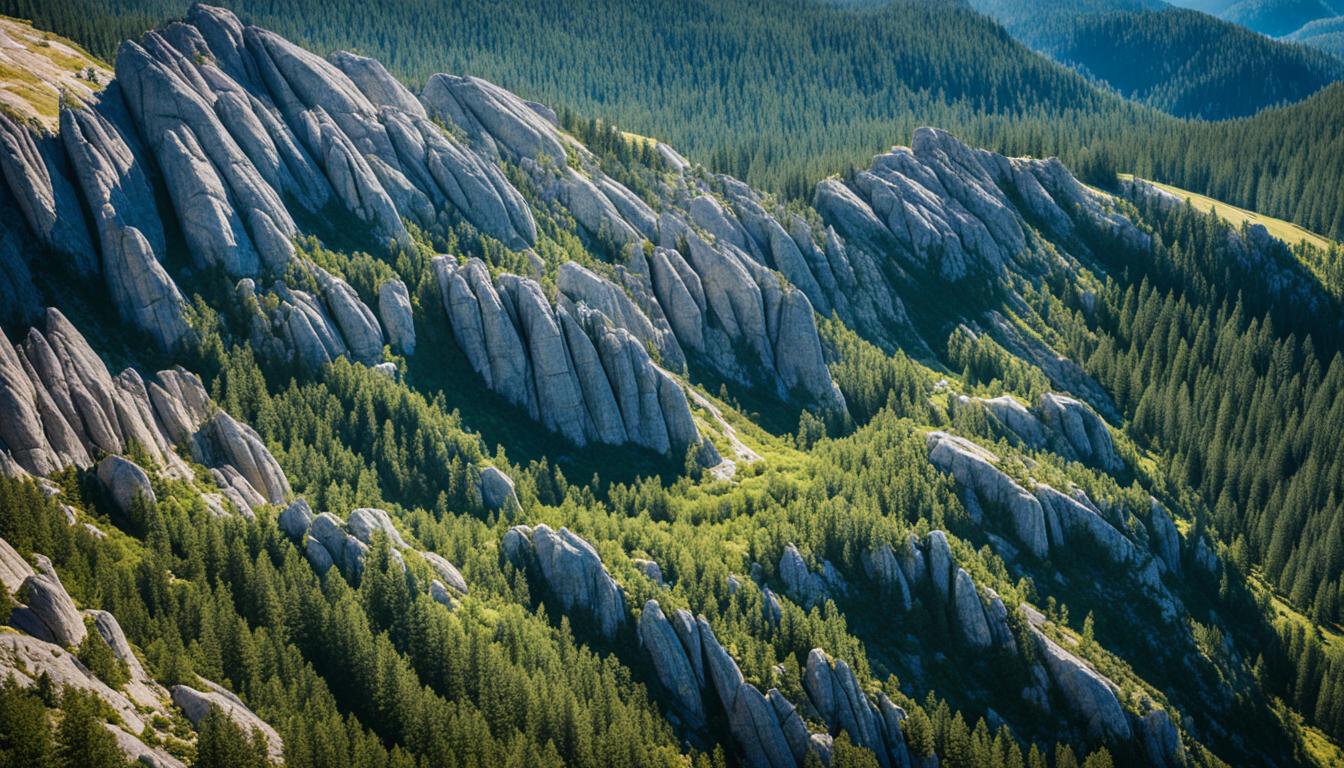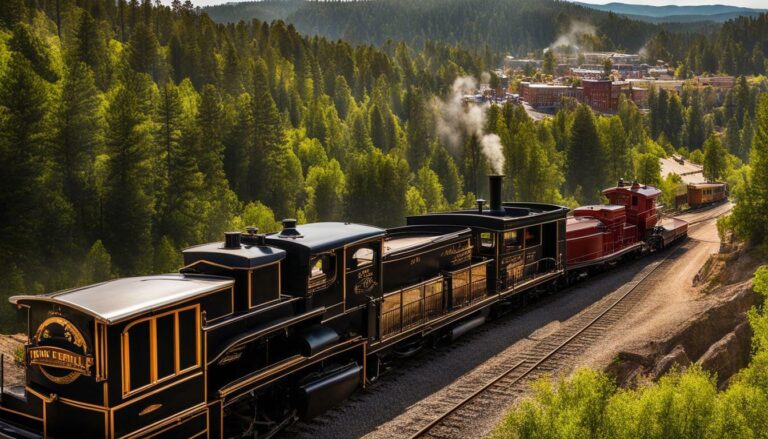Unveiling the Mysteries: A Journey Through the Black Hills National Forest
Nestled deep within the heart of the American Midwest, the Black Hills of South Dakota stand as a testament to nature’s awe-inspiring beauty and rich cultural heritage. While renowned for iconic landmarks like Mount Rushmore and Custer State Park, this region holds a wealth of lesser-known surprises waiting to be discovered. The Black Hills are not only breathtakingly scenic but also geologically fascinating, with granite formations estimated to be over 1.8 billion years old, earning the region the nickname “Island in the Plains.” Prepare to embark on an unforgettable journey into the heart of the American Midwest, where adventure, spiritual enlightenment, educational experiences, and a deeper connection with nature await.
Have you ever wondered what secrets lie hidden within the ancient rock formations of the Black Hills National Forest? This captivating region promises to unveil a world of natural wonders, from towering peaks to subterranean marvels.
Key Takeaways
- The Black Hills of South Dakota represent the heart of the American Midwest, known for their awe-inspiring natural beauty and rich cultural heritage.
- The region boasts a wealth of lesser-known surprises, from breathtaking scenery to geologically fascinating granite formations estimated to be over 1.8 billion years old.
- The Black Hills offer an unforgettable journey, promising adventure, spiritual enlightenment, educational experiences, and a deeper connection with nature.
- Iconic landmarks like Mount Rushmore and Custer State Park are just the tip of the iceberg, with hidden gems and surprises waiting to be discovered.
- Explore the ancient rock formations, towering peaks, and subterranean marvels that make the Black Hills a true natural wonder.
Geological Wonders of the Black Hills
The Black Hills of South Dakota are a treasure trove of geological marvels, showcasing ancient granite formations that date back over 1.8 billion years. These iconic landmarks stand in stark contrast to the surrounding prairie landscape, captivating visitors with their rugged beauty and storied past.
Ancient Granite Formations
The Black Hills are predominantly composed of granite and other igneous rocks, which have endured the test of time to become some of the oldest geological formations in North America. Despite their name, the Black Hills are not made of coal, obsidian, or black rock, but rather a unique blend of minerals that give the region its distinctive appearance.
Black Elk Peak: The Highest Point East of the Rockies
Towering at an impressive elevation of 7,244 feet, Black Elk Peak is the crowning jewel of the Black Hills, standing as the highest point east of the Rocky Mountains. Hikers can explore this popular geographic destination, taking in the breathtaking vistas and keeping an eye out for the local wildlife, including the majestic mountain goats that call the area home.
Exploring the Black Hills National Forest

Beneath the surface of the Black Hills lies a labyrinth of caves and caverns waiting to be explored. Wind Cave National Park, located just south of the Black Hills, is home to one of the world’s longest and most complex cave systems, boasting intricate calcite formations known as boxwork and frostwork.
Wind Cave National Park: A Subterranean Labyrinth
Spanning over 145 miles, Wind Cave is a true geological marvel, with its maze-like passages and unique cave features. Visitors can embark on guided tours to explore the park’s underground wonders, from the delicate flowstones to the breathtaking cathedral-like chambers.
Jewel Cave National Monument: The Third-Longest Cave System
Just a short drive from Wind Cave, Jewel Cave National Monument is home to the third-longest cave system in the world, with over 200 miles of mapped passages. Explorers can marvel at the intricate calcite formations, including the stunning “popcorn” ceiling and delicate cave crystals.
Native American Cultural Significance
The Black Hills have long held profound significance for Native American tribes, particularly the Lakota Sioux, who refer to the area as Paha Sapa, or “hills that are black.” Despite a history of colonization and land disputes, the Black Hills continue to be a symbol of resilience and cultural identity for indigenous peoples.
| Attraction | Highlights | Significance |
|---|---|---|
| Wind Cave National Park | One of the world’s longest and most complex cave systems, featuring intricate calcite formations | Offers a glimpse into the geological wonders of the Black Hills |
| Jewel Cave National Monument | Home to the third-longest cave system in the world, with over 200 miles of mapped passages | Showcases the diverse and captivating underground landscape of the Black Hills |
| Native American Cultural Significance | The Black Hills hold profound meaning for the Lakota Sioux and other indigenous tribes | Represents a symbol of resilience and cultural identity for Native American peoples |
Unveiling the Prehistoric Past

The Black Hills are home to the most dinosaur fossils in the state and can be studied and seen at sites such as the Journey Museum, the Mammoth Site, the Museum of Geology, and the Badlands. Scientists discovered “Sue,” the largest and most complete Tyrannosaurus rex excavated to date, near Faith, South Dakota.
The Mammoth Site: A Paleontological Treasure
The Black Hills are also home to a 26,000-year-old sink hole, known as the Mammoth Site, which contains the world’s largest concentration of mammoth remains. This remarkable paleontological site offers visitors a unique opportunity to explore the ancient past and witness the ongoing excavation and preservation efforts.
Sue the T. rex: The Largest Excavated Fossil
One of the most significant discoveries in the Black Hills is the unearthing of “Sue,” the largest and most complete Tyrannosaurus rex skeleton ever excavated. This incredible fossil, found near the town of Faith, South Dakota, has become a centerpiece of the region’s rich prehistoric heritage, drawing visitors from around the world to marvel at the sheer size and power of this ancient predator.
In total, over 198 fossils have been recorded in the Black Hills, with the most belonging to the genus Triceratops and the Maastrichtian time period. These remarkable discoveries continue to shed light on the diverse and captivating prehistoric landscape that once thrived in the heart of the American Midwest.
Conclusion
The Black Hills of South Dakota have emerged as a captivating tapestry, woven with the threads of ancient geological wonders, a rich cultural heritage, and a treasure trove of prehistoric discoveries. From the awe-inspiring granite formations that have stood the test of time to the intricate subterranean labyrinths that hold the secrets of the past, this region offers an unparalleled journey into the heart of the American Midwest.
Whether you seek the thrill of outdoor adventures, the enlightenment of spiritual connections, or the fascinating insights of educational experiences, the Black Hills stand ready to unveil their myriad surprises. This natural wonderland, with its diverse landscapes and deep-rooted significance, invites visitors to forge a profound bond with the land, to immerse themselves in its timeless allure, and to ultimately emerge with a renewed sense of wonder and appreciation for the enduring majesty of the American heartland.
As you embark on your exploration of the Black Hills, let your curiosity be your guide, and allow the region’s timeless charm to captivate your senses. Embrace the opportunity to uncover the hidden gems that lie within this remarkable natural treasure, and let the memories you create here inspire you to return time and time again, for the Black Hills are a testament to the enduring power of the natural world.







